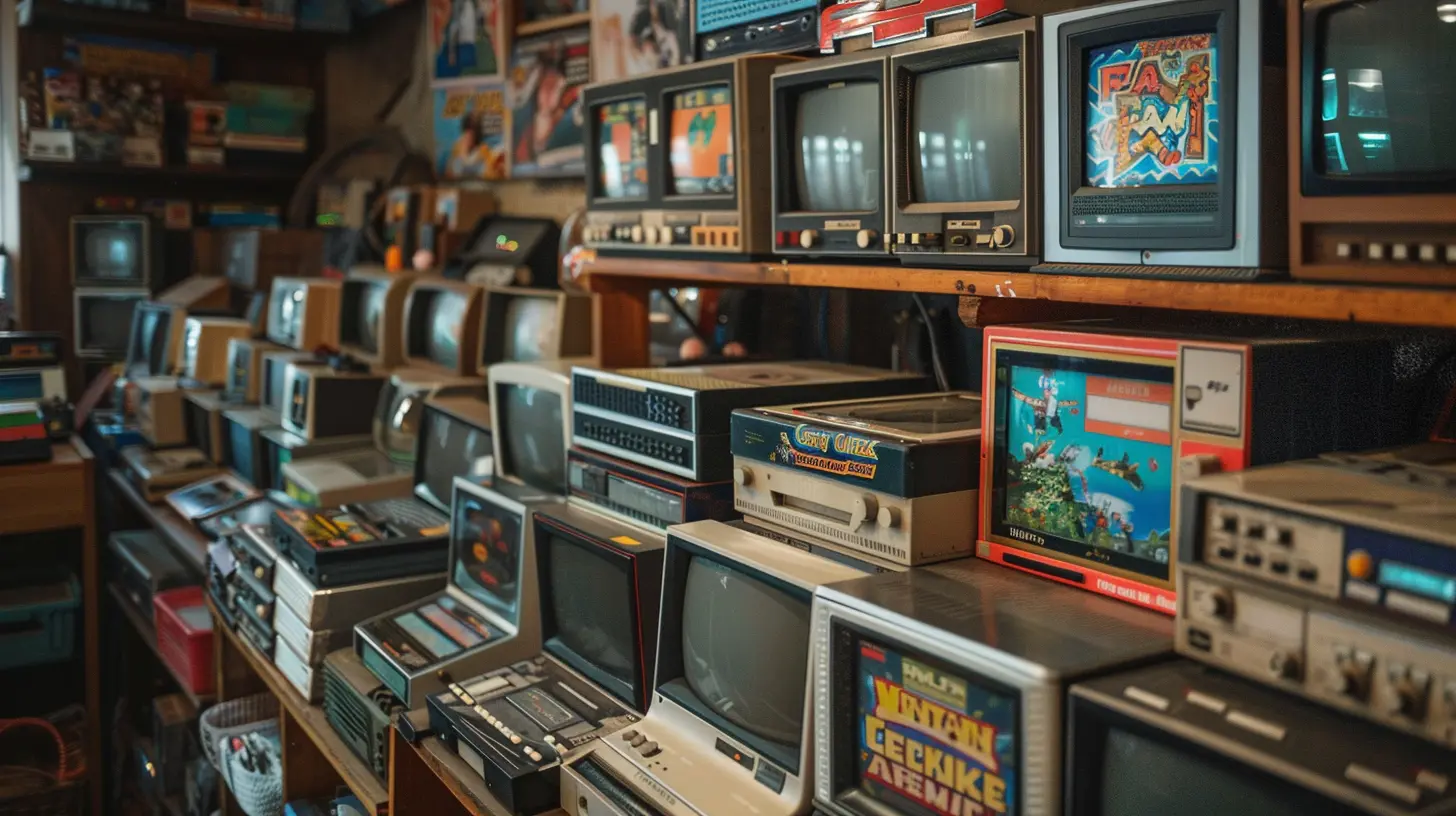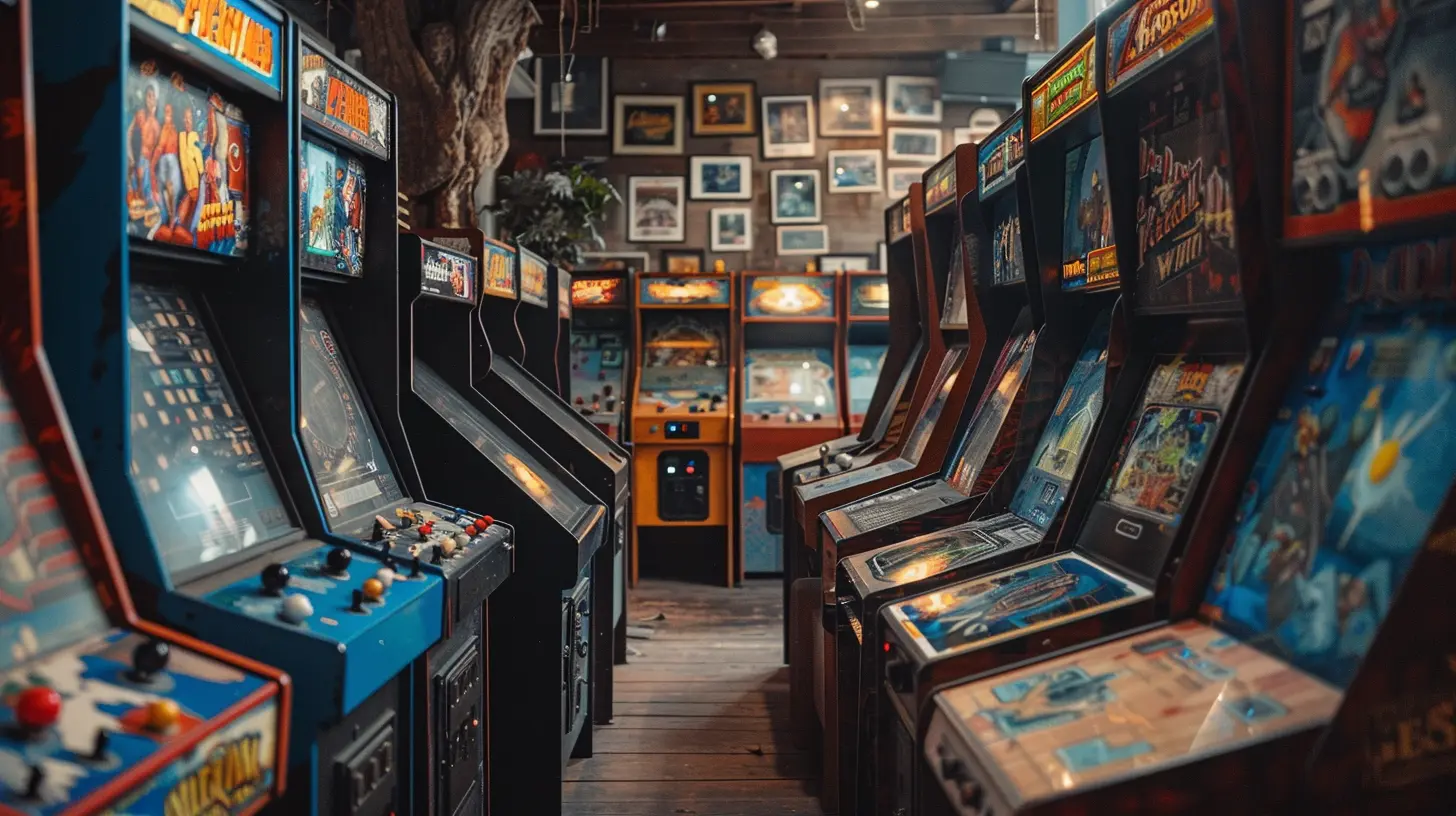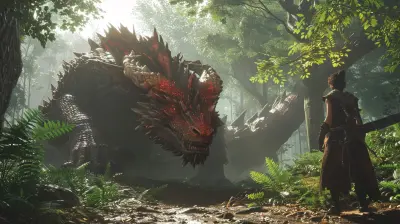Why Classic Games Still Hold Up Today
14 November 2025
When you fire up a dusty old console or boot up a pixelated favorite from the '80s or '90s, it hits differently, doesn’t it? That feeling of nostalgia mixed with genuine fun isn’t just about memories—there’s something special about those classic games. Despite the flood of high-definition graphics, expansive open worlds, and ultra-realistic physics engines today, many of us still return to the classics. Why? Because they hold up. And in many ways, they still outshine modern titles.
Let’s dive into what makes these old-school gems so timeless, and why gamers of all ages still find themselves hooked on them.
The Simplicity That Wins Hearts
Let’s face it—modern games can be overwhelming. Between microtransactions, multiple game modes, endless patches, and skill trees that look like family genealogies, it sometimes feels like you need a manual to just start playing.Classic games, on the other hand? Pure simplicity. You pick up the controller, you press start, and you’re in. No downloads, no DLCs, no 20-minute tutorials. Just you and the game.
Games like Super Mario Bros, Tetris, or Pac-Man were built on simple mechanics that anybody could learn in seconds but took hours (if not days) to really master. That “easy to learn, hard to master” formula is timeless—and it continues to be the secret sauce behind addictive gameplay.
Timeless Gameplay Loops
At the heart of every great game is a strong gameplay loop. It's what keeps you saying "just one more level."Classic games have this down to an art. Take The Legend of Zelda—you explore, you fight, you solve puzzles, you get rewarded. Then the loop starts over, and every time, it feels just as rewarding as the first.
Meanwhile, Donkey Kong and Mega Man knew how to challenge us with pattern recognition, timing, and skill progression. These games didn’t need fancy cinematics or graphics—they hooked us with engaging mechanics and design that kept our thumbs twitching.
Even now, indie games often go back to old-school mechanics because they just work. That's not by accident—those loops are addictive and satisfying.
Nostalgia, Sure—But It’s More Than That
Okay, nostalgia definitely plays a role here. There’s no denying that booting up Street Fighter II or Duck Hunt brings back childhood memories and simpler times.But even younger gamers, who weren’t even born when these games launched, are drawn to them today. Why? Because they’re fun. Period.
That’s the beauty of a well-designed game—it transcends generations. It’s not just about reliving memories; it’s about appreciating timeless design, clear goals, and pure, distilled fun.
Graphics Aren’t Everything (Really!)
We get it—today’s games look amazing. The lighting, the textures, the lifelike animations—it’s all eye candy. But visuals are just one part of the equation.Many classic games used pixel art and chiptune sound because that’s all the hardware could handle. But rather than being a limitation, it sparked creativity. Developers had to get clever with what they had, and what emerged were some of the most iconic visuals and soundtracks in gaming history.
Look at Chrono Trigger, Castlevania: Symphony of the Night, or Final Fantasy VI. Their art styles may be "dated" to some, but they’re also bold, unique, and instantly recognizable. They don’t try to be realistic—they try to be unforgettable. And in many ways, they succeeded.
Storytelling That Doesn’t Waste Your Time
Not every game needs a 45-minute intro cutscene, right?Classic games often told their stories through gameplay. They didn’t rely on big-budget cinematics or hours of dialogue. Instead, they gave you just enough to get invested—and let the game tell the rest.
Games like Metroid, with its sense of isolation and exploration, didn’t need to spell it out. The design told the story. Or think about EarthBound, which balanced quirky humor and serious themes in a way that still feels fresh today.
These games respected your time. They trusted that you were there to play—not just to watch.
Difficulty That’s Actually Rewarding
Here’s a hot take: modern games are often too forgiving. You get infinite lives, generous checkpoints, regenerating health, even difficulty sliders. Great for beginners, sure—but sometimes you want a real challenge.Classic games didn’t pull punches. They made you earn every victory. Games like Ghosts 'n Goblins, Battletoads, or Ninja Gaiden were brutal—but also fair (most of the time). When you finally beat them, the sense of accomplishment was unmatched.
This difficulty level taught us patience. It sharpened our reflexes. It made us better gamers.
And today, we’re seeing a resurgence of that with the popularity of soul-crushing games like Dark Souls and Cuphead, which are clearly inspired by that old-school approach.
The Power of Local Multiplayer
Online multiplayer is awesome—no doubt. But there’s something magical about crowding onto a couch with your friends, controllers in hand, yelling and laughing at the screen.Classic games thrived on local multiplayer. Think GoldenEye 007, Mario Kart 64, or Bomberman. These games turned sleepovers and family get-togethers into epic competitions.
They didn’t rely on lag-free connections or voice chat—they were all about shared fun in the same room. And honestly? That kind of social gaming never goes out of style.
Replayability That Keeps You Coming Back
A lot of modern games are one-and-done. You finish the campaign, maybe dip into some multiplayer, and then you move on.Classic games, though? They were built to be replayed. Whether it was chasing a high score in Galaga, trying to beat your own time in Sonic the Hedgehog, or exploring alternate endings in Metroid, there was always a reason to come back.
Even speedrunning—a huge part of gaming culture today—owes its existence to classic games. Players find new ways to experience old games, pushing the limits of human reflexes and creativity.
Inspiring Generations of Developers
Ask any modern game developer who inspired them, and chances are they’ll name a classic game or two. These old titles laid the groundwork for game design today.They taught developers how to build compelling levels, how to pace a challenge, and how to make the player feel in control. They showed that a game didn’t need to be complex to be fun—it just needed to be thoughtful.
And those lessons are still being applied today in both indie and AAA games. You can draw a direct line from Metroid to Hollow Knight, from Castlevania to Dead Cells, from Mario to… well, every platformer ever.
Classic Doesn’t Mean Outdated
Let’s crush a common myth: classic games aren't “outdated.” Sure, they might not have ray-traced lighting or motion capture, but their design philosophy is still rock-solid.In fact, many modern indie games are spiritual successors to classics. Titles like Shovel Knight, Celeste, Undertale, and Stardew Valley are love letters to the past—and they’re critically acclaimed.
Why? Because the core elements that made classic games great are still what make any game great: fun, challenge, creativity, and heart.
Final Thoughts: The Pixel Never Dies
So, why do classic games still hold up today? Because they remind us that good design doesn’t age. They remind us that games are about fun, not flash. And they connect generations of gamers through pure, unfiltered play.Whether you grew up with a NES or you’re discovering these retro gems for the first time, one thing’s clear: classic games aren’t going anywhere. In fact, with the rise of retro collections, remasters, and indie tributes, they’re more alive than ever.
So next time you’re overwhelmed by the endless options on your digital library, try something old. You might just find that it feels more refreshing than anything new.
all images in this post were generated using AI tools
Category:
Classic GamesAuthor:

Avril McDowney

